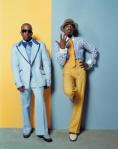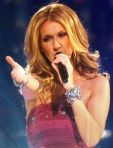“People listen to Top 40 because they want to hear their favorite songs or songs that sound like their favorite songs. When something different comes on, they’re offended. They don’t want anything unfamiliar.”
Charles Duhigg, The Power of Habit


Here’s a tidbit from The Power of Habit by Charles Duhigg. The issue is how a radio station introduces a new song by an unknown artist. He describes in detail the attempt to make a big hit out of a song called “Hey Ya!” by OutKast. (My apology – I don’t know this song. You can watch the music video of it here).” The research that music folks do that can practically guarantee when a song will be a hit was clear – this song was going to be a monster hit. But, when stations would play it, people would switch stations during the song. Not a good sign!
Here’s what they discovered: they found out that even a sure-fire monster hit, when it is new, has to be sandwiched between two “familiar” songs, in order to keep people from switching stations. And they have to follow this practice until listeners decide that this new song now sounded “familiar.” Fascinating.
So, this is what they did: they played a Celine Dion song, and then immediately followed with Hey Ya!, and then immediately after, they played another familiar song by another familiar artist. The key word in all of this is “familiar.” Interestingly, people were “sick of” Celine Dion, but they would not change the station, because she sounded “familiar.” From Duhigg:
“There were songs that listeners said they actively disliked, but were sticky nonetheless… Male listeners said they hated Celine Dion and couldn’t stand her songs. But whenever a Dion tune came on the radio, they stayed tuned in. Within the Los Angeles market, stations that regularly played Dion at the end of each hour – when the number of listeners was measured – could reliably boost their audience by as much as 3 percent, a huge figure in the radio world. Male listeners may have thought they disliked Dion, but when her songs played, they stayed glued.”
So I was sitting in church yesterday, Easter Sunday, and we were singing the Wesley hymn Christ The Lord is Risen Today. And, at the conclusion of the service, the choir sang the Hallelujah Chorus. Both songs were written centuries ago. Wesley’s hymn was first published in 1739, and it was based on a fourteenth century version of a Latin hymn. Handel wrote the Messiah in 1741. So, these are not exactly examples of new, modern sacred music.
It was wonderful – and wonderfully familiar.
I had just finished reading the Duhigg book, and thought about this experience, comparing it to the “Hey Ya!” challenge. The last thing I want on Easter Sunday is some new, modern, never-heard-before song. I want the familiar.
So, what do we do with all this? This may explain why introducing and accepting change is so hard. People want the familiar. Even the “familiar” that they no longer “want,” that they are “tired of,” they still want it because it feels “familiar.”
So, if you are proposing a change at your work, asking people to buy in to something they have not ever experienced, look for ways to either make if feel familiar, or, sandwich it in between other actions that are familiar.
No wonder change is so hard…
But, Part 2 – “On the Other Hand”:
But… we live in an era when change has to be the name of the game. So, how do we help people become more comfortable with the unfamiliar?
There are places where we do not want the familiar. If we go to the annual auto show, we want the new and different to be on display. And we are looking for the “cool” factor, the new and different and unfamiliar – the “I can’t wait to try that” factor. Same with an electronics show. We want to see the latest new gadgets and we look for those rare breakthroughs that will change our lives for the better.
 So, maybe, in our work environments, we need some “what’s new and different” shows. In Imagine, Jonah Lehrer describes Google’s CSI (Crazy Search Ideas) events:
So, maybe, in our work environments, we need some “what’s new and different” shows. In Imagine, Jonah Lehrer describes Google’s CSI (Crazy Search Ideas) events:
“It’s like a middle-school science fair. You see hundreds of posters from every conceivable field. The guys doing nanotechnology are talking to the guys making glue.”
Such events are “defined as” looking for the new – looking for the next, new, new change. Maybe we need more of these, to get our change muscles the exercise they need, so that we aren’t offended with, and driven away by, the unfamiliar.

[…] box office. People tend to resist everything unfamiliar until they start to like it (case in point: Outkast-Hey Ya). I am not huge fan of tests, surveys and research, because at best they are just a poor reflection […]
[…] if? What if we were to try to incorporate what the music industry does when it promotes a new song? Outcome data is just like a new song, isn’t it? It’s a new song for patients, […]
[…] In Charles Duhigg’s “The Power of Habit,” he discusses the inherent issue human beings have with change. The now smash-hit “Hey Ya!” by Outkast actually suffered initially because it was too drastically different from what people were listening to at the time. In response, radio stations would sandwich it between popular songs during that time, easing the transition for listeners. […]
[…] that simple.” So how does a new song ever get added in? “We put it in what we call a sandwich. Real research has been done showing that if you ‘sandwich’ a new, unknown song between two already-familiar songs, […]
[…] to Charles Duhigg, “People listen to Top 40 because they want to hear their favourite songs or songs that sound […]
[…] stations have picked up on this and popularized new songs by sandwiching them between two recognizable songs to prevent listeners from switching stations. […]
[…] stations have picked up on this and popularized new songs by sandwiching them between two recognizable songs to prevent listeners from switching stations. […]
[…] stations have picked up on this and popularized new songs by sandwiching them between two recognizable songs to prevent listeners from switching stations. […]
[…] stations have picked up on this and popularized new songs by sandwiching them between two recognizable songs to prevent listeners from switching stations. […]
[…] stations have picked up on this and popularized new songs by sandwiching them between two recognizable songs to prevent listeners from switching stations. […]
[…] stations have picked up in this and popularized new songs through sandwiching them between two recognizable songs to stop listeners from switching stations. […]
[…] stations have picked up on this and popularized new songs by sandwiching them between two recognizable songs to prevent listeners from switching stations. […]
[…] stations have picked up on this and popularized new songs by sandwiching them between two recognizable songs to stop listeners from switching stations. This […]
[…] stations have picked up on this and popularized new songs by sandwiching them between two recognizable songs to prevent listeners from switching stations. […]